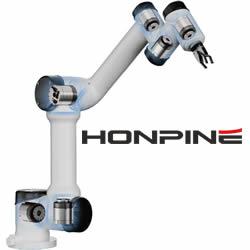Palladyne AI Corp Provides 2025 Mid-Year Business and Financial Update
First Half 2025 Financial and Product Development Objectives Met; Focus Shifts to Completion of Version 2 of Palladyneâ„¢ IQ, Demonstrating Enhanced Capabilities for Palladyneâ„¢ Pilot with Defense Community and Securing Customers
SALT LAKE CITY - August 6, 2025 - Palladyne AI Corp. (NASDAQ: PDYN and PDYNW) ("Palladyne AI"), a developer of artificial intelligence software for robotic platforms in the industrial and defense sectors, today announced key business and financial achievements to date for 2025 in conjunction with the filing of its 2025 second quarter Form 10-Q.
Mid-2025 Highlights and Recent Developments
•Continued strengthening of the balance sheet, with $62.7 million in cash, cash equivalents, and marketable securities on hand as of June 30, 2025, working capital of $62.0 million, and no debt for borrowed money or other long-term financial obligations on the balance sheet other than the Company's long-term office lease.
•Raised $34.8 million, net of commissions and offering expenses, during the first half of 2025 through at-the-market offerings and the exercise of warrants.
•First half 2025 cash burn of $2.0 million per month, adjusted for net cash raised during the year, with approximately the same rate expected for the second half of 2025, at the upper end of the $1.6 - $2.0 million range previously communicated.
•Initial Commercial versions of Palladyne™ IQ and Palladyne™ Pilot products for sale.
•Version 2 of Palladyne IQ scheduled for release in second half 2025 to incorporate user experience and other improvements based on continued testing and customer feedback.
CEO Commentary
The intensifying tariff and foreign policy landscape, especially with ongoing U.S.-China tensions, is prompting a re-evaluation of local manufacturing and global supply chains. Manufacturing reinvention in 2025 is no longer speculative-it is federal policy. President Trump's reshoring agenda, matched with defense-driven stimulus and AI-centric automation, will fuel a new era of digitally enabled, domestically anchored industrial growth. American manufacturers are expected to accelerate reshoring efforts and investments in automation to remain competitive. This will lead to a significant increase in demand for AI-driven robotics that can offset labor costs, optimize throughput, and increase margins.
Additionally, the Trump administration's 2025 policies-especially the Golden Dome missile defense initiative and expanded drone security measures-will drive a significant structural increase in defense spending, with implications across aerospace, autonomy, and AI ecosystems.
We believe that in the medium and long term, reshoring of manufacturing creates a substantially larger market opportunity for our products. However, in the near term, market uncertainty has temporarily slowed sales momentum for Palladyne IQ. Systems integrators and potential customers of Palladyne IQ have indicated that recent changes in U.S. trade policy have caused some of them to re-evaluate their automation priorities. In several cases, this re-evaluation is leading to discussions about substantially larger potential engagements with prospective customers compared to the scope that was under discussion before the policy changes. Based on interaction with dozens of potential customers during the first half of 2025, we believe that the sales cycle for our products is likely to be between 12 and 18 months, or even longer. We expect that the second half of 2025 will bring greater clarity on our potential customers' automation priorities, planning, and initiatives.
Fortunately, we believe we are well-positioned to capitalize on strong structural drivers that will accelerate over the coming years:
•Manufacturing Reinvention: The Trump administration's second term is doubling down on a "Made in America" economic strategy, emphasizing domestic production, strategic autonomy, and AI-enabled automation to modernize U.S. manufacturing. We believe reshoring and labor shortages will trigger long-term investment in domestic smart factories, accelerating demand for AI-driven automation platforms.
•Public Safety Modernization: The private sector is stepping into roles traditionally held by public agencies. One of the most exciting near-term growth areas lies at the intersection of drones and public safety. Across the United States, municipalities and private security firms will invest in autonomous aerial surveillance, emergency response, and infrastructure inspection. Security firms, utilities, and logistics providers are adopting drone-based AI for surveillance, response, and monitoring.
•Government & Defense AI Spending: The FY2025 National Defense Authorization Act (NDAA) reflects an increase in total defense spending exceeding $950 billion, with a large share of new appropriations earmarked for missile defense and counter-drone systems (Golden Dome, THAAD upgrades, directed energy weapons), AI and autonomous systems in both tactical and ISR (intelligence, surveillance, reconnaissance) roles, and U.S.-made drone procurement and anti-drone technologies. Increased AI and autonomy prioritization within DoD budgets and homeland security initiatives create long-term federal procurement and grant opportunities. A change in administration or policy emphasis could alter funding distribution, but we expect the strategic importance of autonomy to national competitiveness and security to remain prominent and nonpartisan.
We are at the forefront of the AI revolution in robotics-enabling autonomous decision-making and multi-agent collaboration across drones, industrial robots, and edge-deployed systems. We believe that the macroeconomic, political, and technological environment is creating significant tail winds for our business. As businesses confront supply chain volatility, labor constraints, and national security demands, our Palladyne IQ software is well positioned to be a critical enabler of operational resilience and intelligent automation. We also see opportunities to scale our Palladyne Pilot platform across new sectors, strengthen our commercial pipeline, and expand our partner ecosystem with drone manufacturers, integrators, and defense contractors. We continue to expect to begin generating revenues from our products in the second half of 2025 and for revenues to grow modestly throughout 2026.
Featured Product

